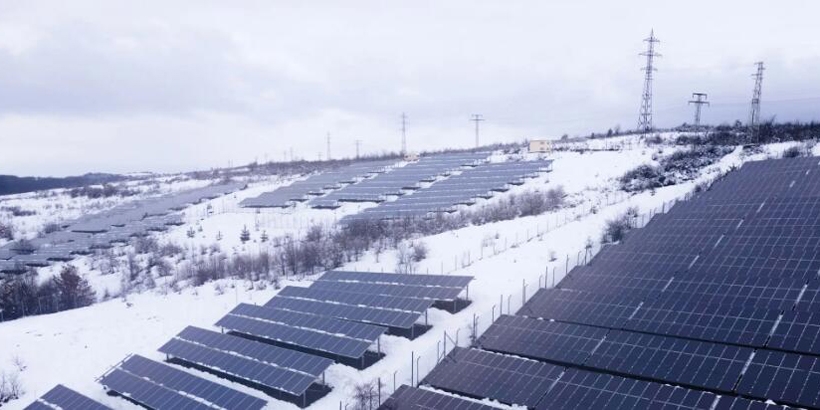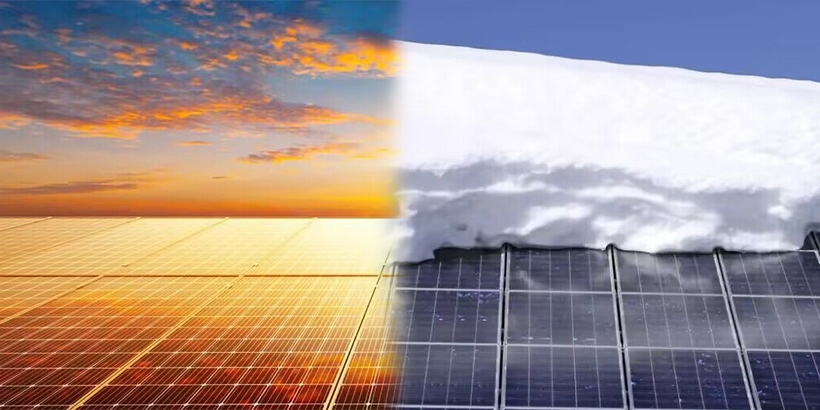There are significant seasonal differences in the production of solar panels between winter and summer. Understanding these differences is critical to optimising the performance of solar systems. The following is a detailed analysis:
Characteristics of Solar Energy Production in Summer
During summer, the intensity of sunlight is high, and the duration of daylight is long. In most regions, there is more than 10 hours of sunlight daily. The high intensity of light directly increases the energy output of solar panels. The extended daylight hours in summer favor prolonged efficient operation of solar panels, thereby increasing the total power generation. Although summer provides intense sunlight, high temperatures can reduce the efficiency of solar panels. Photovoltaic cells typically operate most efficiently at around 25 degrees Celsius; higher temperatures can lead to decreased efficiency. Therefore, good ventilation and cooling should be considered in the design and installation of solar panels to ensure they maintain relatively high efficiency even in hot conditions.
The summer climate is characterized by many clear days with minimal cloud cover, resulting in more frequent direct sunlight, which helps increase the productivity of solar panels. However, extreme weather events such as heavy rain and thunderstorms can occasionally occur in summer, temporarily affecting the efficiency of solar panels, but the overall impact is generally minor.

Characteristics of Solar Energy Production in Winter
In winter, the position of the sun is lower, and the intensity of sunlight decreases. Most regions experience only 5 to 6 hours of sunlight per day, directly reducing the power generation time for photovoltaic panels. Additionally, shorter daylight hours in winter further reduce the total power generation time, leading to a decrease in overall power output. Lower temperatures favor the efficiency of solar panels, as photovoltaic cells perform better in colder conditions. However, this efficiency gain is not sufficient to offset the reduction in power generation caused by decreased sunlight. Despite the beneficial effect of low temperatures on efficiency, it is essential to ensure that solar panels are not adversely affected by extreme cold, particularly to prevent them from being covered by ice and snow.
Winter often brings increased cloud cover and snowfall, which can block sunlight and cover the surface of solar panels, further reducing light absorption. Moreover, the frequent occurrence of harsh weather in winter necessitates regular cleaning of snow and dirt from the panels to ensure their efficient operation.

Solar Panel Savings: Summer vs. Winter
There are reasons for that, of course. The winter months are generally cloudier than summer days, and winter days are also shorter. Combine those two facts, and you won't be getting the same production as you might see on a sunny, summer day, when there is also additional daylight hours for electricity generation. And snow can be a factor too. If your panels are covered by snow, that also will hinder production until the snow melts or is removed with a product such as a Roof Rake that's designed to clean off the panels without damaging them.
But here's the great news. With the winter solstice behind us, we've already seen the shortest day of the winter. The days only get longer from here, and that gives your solar panels additional opportunities for produce energy. And as the clouds part and more sun arrives, you'll really begin to see why you went solar in the first place---for the tremendous savings on your electric bill!
That's why it's important to note that the goal of your solar energy system is to offset your energy usage over an entire year, not any given day, week, or month. In the sunnier summer months, your system can generate more energy than you use, generating electric bill credits. In the cloudier, winter months, your system may generate less energy than you use, and you can use the credits you generated during the summer.

Get smarter about solar! Check out Powerhome's blog.
So if you're seeing a slight variance in your solar production, know that seasonality is the likely culprit. If there's still concern about your production, please contact us, and we would be happy to look into it for you. We'll crunch the numbers after looking at your three most recent electric bills and get you the answers you need.
Why Go Solar?
For those who still haven't gone solar, know that there's never been a better time to do so than now! Sign up to see if your home qualifies today. For those that do go solar, know that In 2024, the U.S. solar federal tax credit provides a credit of up to 30% of the cost of installing a solar energy system. The official name of this tax credit is the Residential Clean Energy Credit, and it applies to qualified solar systems installed between 2022 and 2032. This means that if you install a solar system in 2024 that costs $33,000, you could receive a tax credit of up to $9,900.
Please feel free to contact us to enquire about purchase plans and we will be at your disposal.
(1).png)
(1).png)